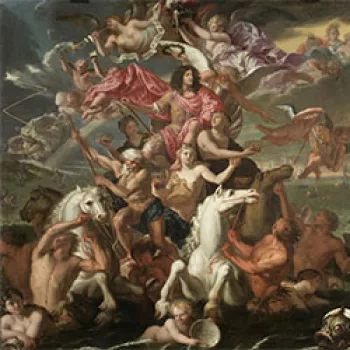Two-handled cup 1685
Silver, flat chased | 11.6 x 21.5 x 13.6 cm; 423.1 g (Weight) (whole object) | RCIN 46299
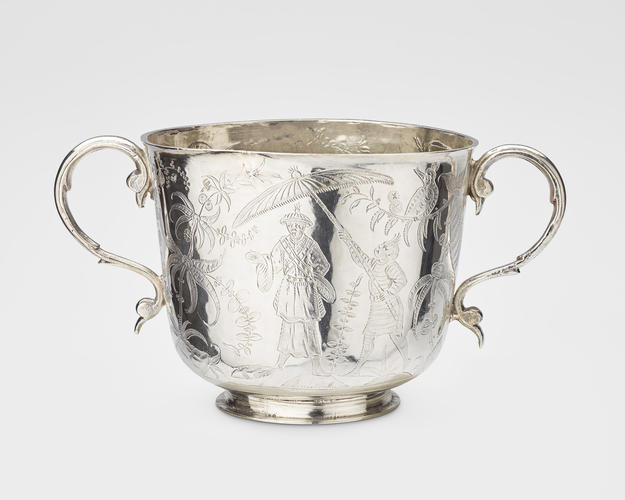
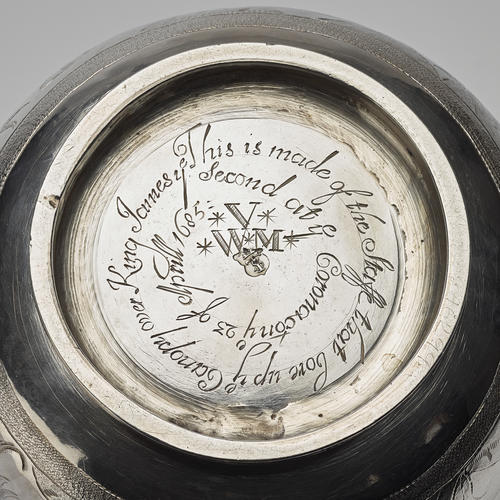

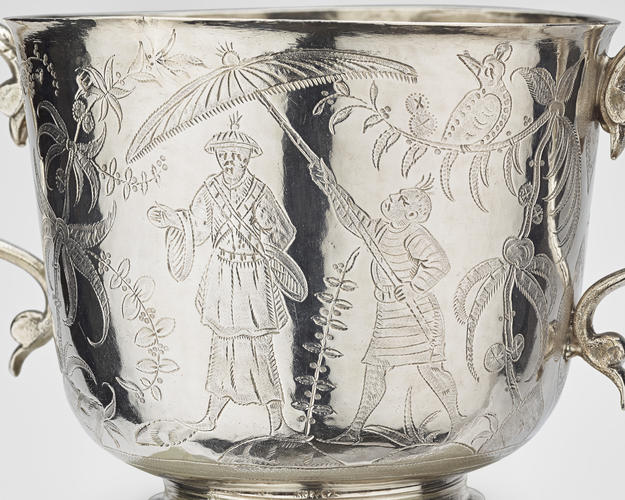
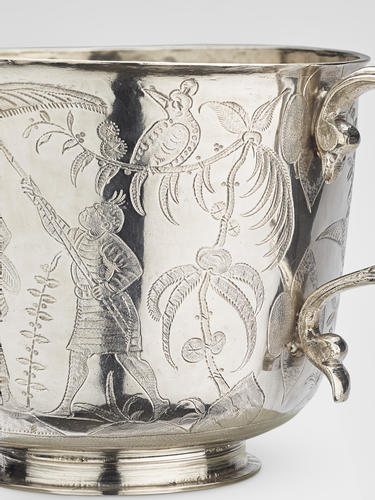
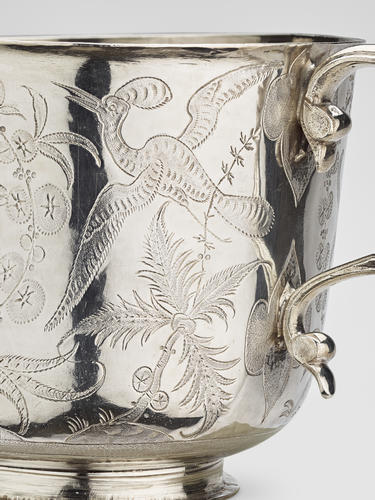
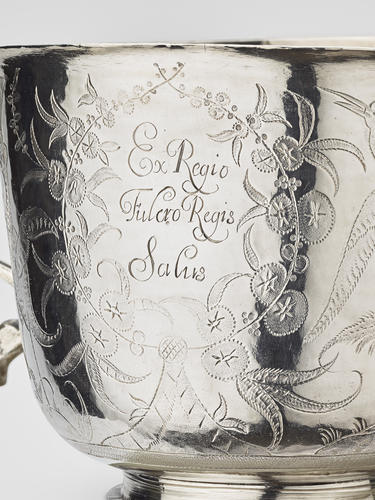

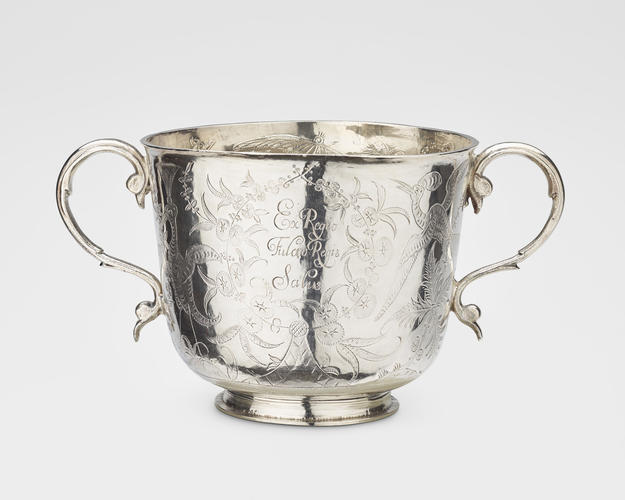
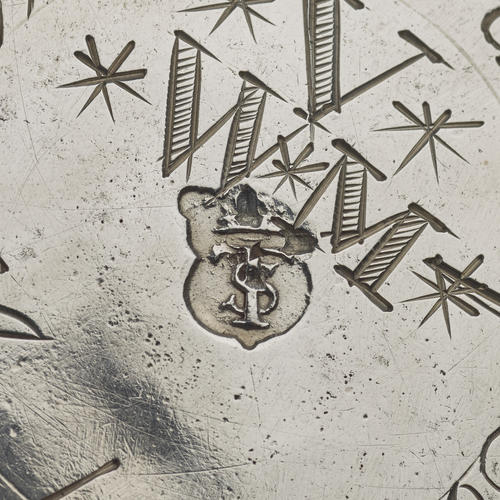
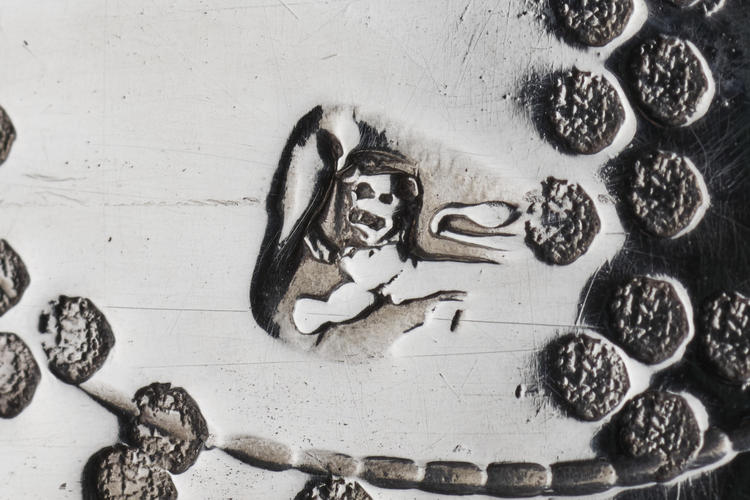
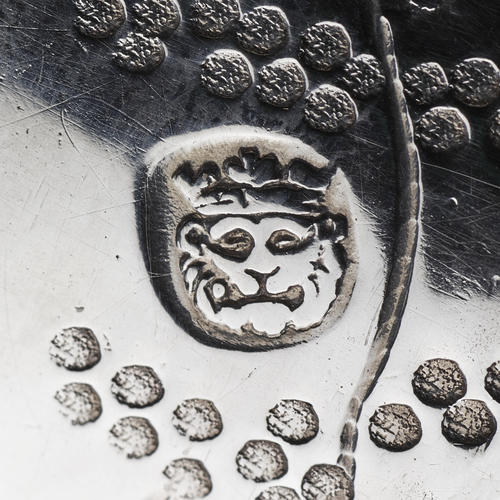
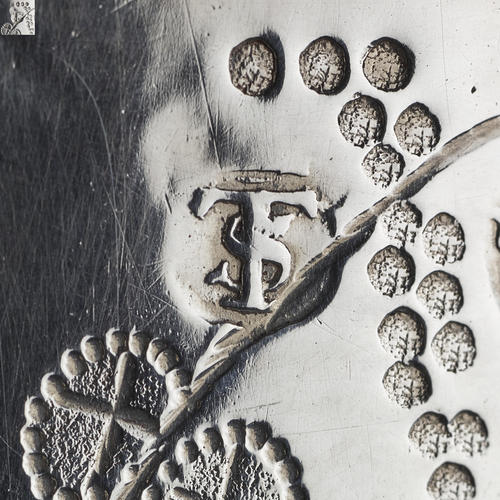
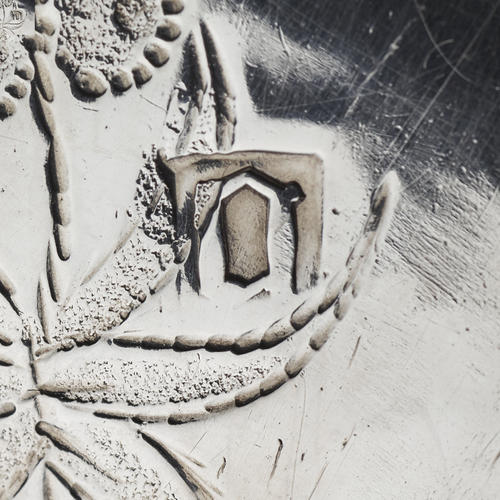
-
A silver two-handled cup on a shallow foot, with scroll handles, the body flat chased with chinoiserie scenes, showing one figure holding a parasol over another, exotic birds and plants. The reverse is engraved in Latin: Ex Regio Fulcro Regis Salus.
The base carries an inscription that the silver used to create this cup was taken from the staves used to support the silk canopy carried over James II at his Coronation. By tradition, the canopy of cloth of gold carried over the monarch and his consort in the coronation procession was borne by the Barons of the Cinque Ports. At the coronation of James II, 32 Barons were involved in the procession, carrying the two canopies over the King and Mary of Modena, each staff supported by four men. The Barons were prominent members of the five ports and two 'ancient towns' that had historically formed the first line of defence in England, namely Hastings, New Romney, Hythe, Dover, Sandwich, Rye and Winchelsea. The Latin inscription on the cup refers to this ancient defensive role – translating loosely as 'from the region which defends the King'. Given the title of Baron only for the day of the coronation, these gentlemen were offered as their perquisite the silver from the staves and bells that dressed the canopy, amounting to around 16 troy ounces of silver each. In addition they were given a share of the cloth of gold, and were invited to sit at the coronation banquet at a table to the right of the king.
The chinoiserie figures which form the decoration may relate to the Chinese silk used to create the cloth of gold canopy, although equally, at this date, chinoiserie motifs were extremely popular as decorative features on silver vessels. Many of the motifs used were drawn from Dutch prints, and especially the works of Johan Nieuhof, of the Dutch East India Company, whose account of his travels to China was translated into English in 1669 and published again in 1673. Further illustrations by his compatriot Athanius Kircher were also popular in England and seem to have been influential in the style of plants engraved on silver of the period. The maker TS also produced a pair of salvers with similar plants and birds with their distinctive crests chased into the decoration, marked for the year 1683/4. One of these was formerly in the Jaime Ortiz-Patino collection; the other is in the collections at Polesden Lacey (NT 1246855).
It is not yet known which of the barons used the silver from his share to be made into this cup. A similar vessel, with a lid, is in the collections of the Victoria and Albert Museum (M.34:1, 2-2008), although that version has more elaborate handles and the cup has been gilded. It was made for two of the barons, Cresheld and Gawden Draper, from Winchelsea. Like this example it is flat chased with chinoiserie decoration. It is possible that the Royal Collection cup also had a lid when it was first made. It now weighs a little over 13 1/2 troy ounces - the remainder of the usual 16 ounces presumably made up by the now-missing lid.
Text adapted from Charles II: Art and Power (2017).Provenance
Commissioned by one of the Barons of the Cinque Ports in 1685; acquired by King Edward VII when Prince of Wales.
-
Creator(s)
(goldsmith)Acquirer(s)
-
Medium and techniques
Silver, flat chased
Measurements
11.6 x 21.5 x 13.6 cm; 423.1 g (Weight) (whole object)
Category
Alternative title(s)
Cup




